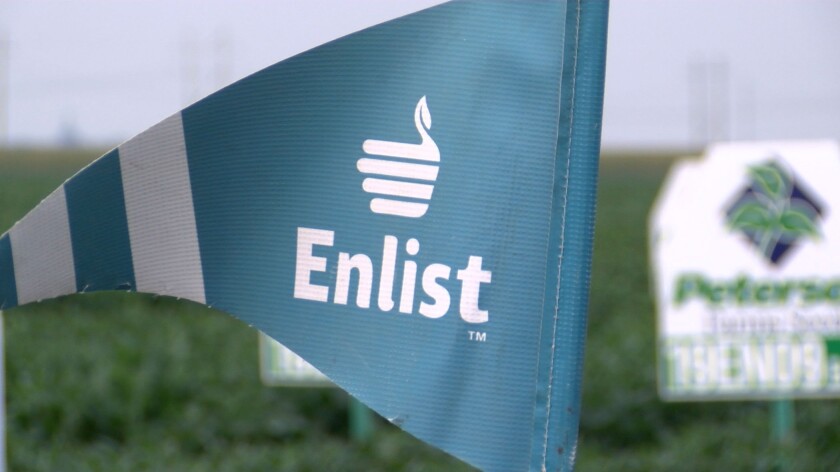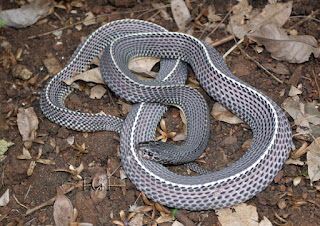After being 'rattled' by EPA, soybean growers and Corteva, hope for lessons learned on endangered species - Agweek
You can't blame Minnesota soybean growers for feeling "rattled" by the EPA.
In January, the Environmental Protection Agency announced it was restricting the use of a herbicide in six Minnesota counties out of concern for an endangered species, a species it chose not to make public.
Before the calendar could flip to April, EPA had reversed those restrictions as well as even wider herbicide bans because of an insect called the American burying beetle.
So what was behind the initial secretiveness? Why the sudden reversal?
On the first question, EPA is sometimes reluctant to divulge what species it is trying to protect out of concern for that species.
ADVERTISEMENT
"It took a couple months to find out what endangered species they were talking about," said Joe Smentek, executive director of the Minnesota Soybean Growers Association. It was soybean growers who were directly affected by the restrictions on Enlist Duo herbicide, for use on Enlist soybeans, made by Corteva Agriscience.
The reasons for EPA's secrecy, Smentek learned, is that there are some collectors of endangered species that might go out to dig up an endangered plant if they have clues as to where to find it.
Another problem is people wanting to eradicate an endangered species to get rid of the hassles that come along with trying to protect an endangered species.
Smentek went so far as to file a Freedom of Information Act request to find out the species.
He learned from the American Soybean Association that it was the eastern massasauga rattlesnake. That was about the same time that Agweek published a story identifying the species as the snake .
In the story, the EPA said the eastern massasauga rattlesnake could be found in all 87 Minnesota counties, according to range maps provided by the U.S. Fish and Wildlife Service.
But Minnesota snake experts, the Minnesota Department of Natural Resources website, and even the Fish and Wildlife Service website made it clear that if the snake ever could be found in Minnesota, it would be limited to a sliver of habitat along the Mississippi River across from Wisconsin, where the snake can be found.
The six Minnesota counties that were affected by restrictions, Clay, Marshall, Polk, Redwood, Renville, and Stearns, were nowhere near any potential range of the rattlesnake.
That helps answer the second question.
ADVERTISEMENT

Trevor Peterson / Agweek
According to the March 29 EPA news release announcing the reversal in Minnesota and scrapping restrictions on Enlist One and Enlist Duo in other states related to the American burying beetle, Corteva had made an appeal for use of the herbicides in the 128 counties affected by the American burying beetle. "Based on EPA's new effects determination, which included a robust analysis of updated species range maps from the U.S. Fish and Wildlife Service," it decided the beetle was not at risk.
Likewise, in March, Corteva asked for approval in the six Minnesota counties. EPA said its "prior analyses were based on FWS's 2020 species range maps." And when it looked at range maps updated in 2021, it decided there was no need to protect a nonexistent snake.
So how did these erroneous maps come to be?
"That's a great question, I wish I had an answer for you," Cynthia Ericson, vice president of U.S. marketing, told Agweek.
Smentek said he has been asking the same question.
He said the EPA started with the outdated map showing the snake in all 87 counties. Then an overlay was placed on the map showing likely habitat for the snake, which narrowed it down to six somewhat scattered counties.
"We haven't been able to get a straight answer on who created that overlay," Smentek said.
Why the Fish and Wildlife Service map originally included all 87 Minnesota counties is another mystery.
ADVERTISEMENT
A spokesperson for the Fish and Wildlife Service said in an email to Agweek: "We have not been able to identify the source of the data used by EPA for its original evaluation; we suggest you contact EPA for that information."
EPA said in an email: "Yes, FWS species range maps from 2020 showed the Eastern Massasauga rattle snake as being present in Minnesota."
So what was learned from this regulatory flip-flop?
Smentek said that it is hoped that endangered species information will become available more quickly and that growers will be given more lead to time to adjust to restrictions. Even in January, many growers had made planting decisions and laid in herbicide supplies. He said when the growing season is imminent, such restrictions should be delayed until the following growing season.
He also said more attention should be paid to having the correct range maps.
"That's a real concern going forward," he said.
Ericson said Corteva will be better prepared to work with EPA on what it needs under the Endangered Species Act.
"It's new. It's the first time an ESA assessment has been completed. And so you learn a lot along the way," Ericson said. "I'm sure the EPA learned quite a bit as well along the way. And anytime you've got a brand new process like that you're going to run into hiccups like this where you can learn and hopefully adjust and adapt next time."
Smentek said that while soybean groups would have liked EPA to respond more quickly, Corteva's more patient approach was effective.
"They're in a tough spot," Smentek said of Corteva working with the EPA. "You have to stay on nice terms … and not get into a situation where it's too adversarial."
Smentek said there was a question among soybean groups on how best to proceed.
"Do we pound on this? Because we could make this map look a lot worse," Smentek said.
Smentek said he hoped that EPA learned from the process.
"These reviews are just going to keep coming," he said.



Comments
Post a Comment